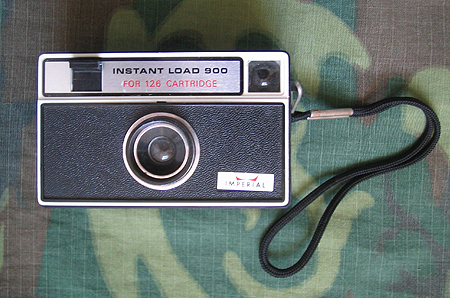These Olympus Pen cameras were issued to SOG Recon teams as a way of recording enemy activity and discoveries .The Pen EES-2 was a very late comer in the Olympus Pen line. The Pen’s started in the late 50’s as an attempt to make a cheap camera. Olympus failed. There is nothing cheap in the way an EES-2 produces superb photographs, nor in its ergonomic arrangement of minimal controls. It’s small in size but its quality can be felt in ones hands and seen in enlargements. The 30mm 1:2.8 lens is a fine piece of glass.
The way Olympus managed to produce and sell it so cheaply was to minimize the number of parts. And in reducing the number of parts, inevitably some camera functions were also reduced. For instance, there are only two shutter speeds: 1/30 and 1/250 of a second. (Confirmed by actual digital shutter speed testing. After 30 years each speed was only a couple milli-seconds off of perfect.) And there is no metered manual exposure mode. It does however have the ability to manually set the aperture anywhere between 2.8 and 22. The aperture settings are really for flash and a flash shoe and flash socket are standard equipment.
It has lock-needle metering with a shutter lockout when exposure is beyond the aperture/2 shutter speed range. But for daytime snapshots this is no encumbrance since the aperture range using only 1/30 equates to EV 9 through EV 15. Which corresponds to photos taken from well-lit interiors to very bright sunlight with ASA 100 film. The additional 1/250 adds 3 more stops of flexibility. One cannot, however, manually shift between the two speeds. The camera determines which speed will be utilized automatically as part of the lock-needle set-up. In fact, the simplicity of taking pictures boils down to: zone focus, aim and shoot. Anyone can manage well exposed photos when things are this easy. Even me!
And since the number of parts were reduced the dependability and ease of maintenance is exceptional. See the section on cleaning the aperture blades. (See "Additional Info below") I have handled several Pen EES-2’s and dirty/oily aperture blades is the only failures I can recall.

This is an example of a Kodak Instamatic camera, typical of those used in base camps to take snapshots.
|
